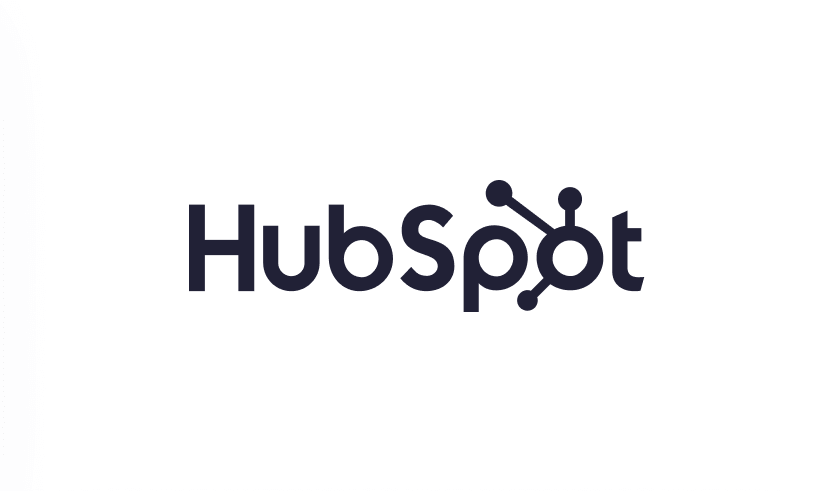Top Email Marketing Tips for Small Businesses in 2025
Level Up Your Email Game: Essential Strategies for Small Businesses
For small businesses, email marketing remains a potent tool for driving sales and nurturing customer relationships. This listicle delivers 12 actionable email marketing tips to boost your bottom line. We'll explore practical strategies, real-world examples, and clear steps you can implement immediately. These tips are designed to help e-commerce businesses, entrepreneurs, and marketers alike enhance their email strategies and achieve measurable results. Learn how to transform your email marketing from a routine task into a powerful revenue generator.
This comprehensive guide provides battle-tested techniques that go beyond the basics. We'll delve into advanced strategies such as personalized content that surpasses simple name insertions, A/B testing to optimize your email performance, and automating email sequences for maximum efficiency. You will discover how to craft compelling subject lines that grab attention, segment your audience for targeted messaging, and design emails optimized for mobile devices. Master these essential email marketing tips for small businesses to gain a competitive edge and cultivate lasting customer loyalty.
We will cover key areas including:
Building a high-quality email list through effective opt-in strategies
Segmenting your audience to deliver personalized messages that resonate
Crafting compelling subject lines that boost open rates and engagement
Utilizing email automation and drip campaigns to nurture leads and drive conversions
Optimizing email design to ensure a seamless experience across devices
Personalizing email content to foster stronger customer connections
This listicle will equip you with the knowledge and actionable strategies to dramatically improve your email marketing results. Each tip is presented with practical examples and clear implementation steps. Whether you are an experienced marketer or just starting out, these insights will help you optimize your email campaigns for increased engagement and conversions. We'll cut through the noise and deliver concrete email marketing tips for small businesses to achieve real growth.
1. Build a Quality Email List Through Opt-in Strategies
For small e-commerce businesses, a robust email list isn't just a nice-to-have; it's the lifeblood of sustainable growth. Building a quality email list through opt-in strategies focuses on attracting genuinely interested subscribers who actively choose to receive your communications. This approach, unlike purchasing lists or employing aggressive tactics, cultivates a receptive audience more likely to engage with your content, click through to your products, and ultimately become loyal customers. Prioritizing quality over quantity ensures higher engagement rates and significantly improves your return on investment in email marketing.
Why Opt-in Strategies are Essential for Email Marketing Tips for Small Businesses
Opt-in strategies are crucial for small businesses venturing into email marketing because they lay the foundation for a healthy, engaged subscriber base. They signify respect for potential customers' inboxes, fostering trust and credibility. This targeted approach allows you to connect with individuals genuinely interested in your brand and offerings, increasing the likelihood of conversions and long-term customer relationships. This directly impacts a small business's bottom line by maximizing the effectiveness of email campaigns and minimizing wasted resources on uninterested recipients.
Real-World Examples of Effective Opt-in Strategies
Several businesses have successfully implemented opt-in strategies to build thriving email lists. HubSpot, a leader in inbound marketing, offers valuable free marketing tools like CRM software and email templates in exchange for email signups. Many local restaurants entice customers to subscribe to their newsletters by offering a discount on their first order. Fitness studios frequently provide free workout guides or exclusive class previews as incentives for joining their email list. These examples demonstrate the diverse ways businesses can offer valuable incentives to attract subscribers organically.
Actionable Tips for Implementing Opt-in Strategies
Strategic Placement: Place signup forms strategically on high-traffic pages like your homepage, blog posts, and product pages. Ensure they are easily visible and accessible.
Exit-Intent Popups: Utilize exit-intent popups to capture the attention of visitors who are about to leave your website. Offer a last-minute incentive, such as a discount code or free shipping, to encourage them to subscribe.
Valuable Lead Magnets: Create compelling lead magnets tailored to your specific industry and target audience. These could include ebooks, checklists, webinars, or exclusive discounts.
A/B Testing: A/B test different signup form designs, copy, and calls to action to optimize conversion rates. Experiment with various approaches to determine what resonates best with your audience.
Regular List Cleaning: Maintain a healthy email list by regularly removing inactive subscribers. This ensures your email metrics remain accurate and improves deliverability rates.
By implementing these opt-in strategies, small businesses can cultivate a high-quality email list that drives engagement, conversions, and ultimately, revenue growth. This is a cornerstone of successful email marketing for small businesses seeking to thrive in the competitive digital landscape.
2. Segment Your Email List for Targeted Messaging
For small e-commerce businesses, a generic email blast to your entire subscriber list is like throwing darts in the dark. You might hit a target occasionally, but you're wasting a lot of effort and potentially annoying a large portion of your audience. Segmenting your email list allows you to divide your subscribers into smaller, more focused groups based on shared characteristics like demographics, behavior, purchase history, or expressed preferences. This targeted approach empowers you to tailor your messaging, making it more relevant and impactful for each segment, ultimately boosting engagement and conversions. Delivering the right message to the right person at the right time is the key to unlocking the true potential of email marketing.
Why Segmentation is Essential for Email Marketing Tips for Small Businesses
Segmentation is no longer a luxury but a necessity for small businesses aiming to maximize their email marketing ROI. By sending highly personalized content, you drastically increase the chances of your message resonating with each subscriber. This leads to higher open rates, click-through rates, and ultimately, sales. Segmentation also allows you to nurture leads more effectively, guiding them through the sales funnel with tailored messages that address their specific needs and interests. For a small business, this translates into stronger customer relationships and increased customer lifetime value.
Real-World Examples of Effective Segmentation
Many successful businesses leverage segmentation to enhance their email marketing efforts. E-commerce stores often segment by purchase categories. For example, a clothing retailer might send separate email campaigns promoting new arrivals in men's wear, women's wear, or children's clothing based on past purchases. Local gyms might segment by membership type and fitness goals, offering specialized workout tips or class recommendations. Restaurants can segment by dining preferences, sending targeted promotions for vegetarian dishes, takeout deals, or dine-in specials. These tailored messages enhance customer experience and drive repeat business.
Actionable Tips for Implementing Segmentation
Start Simple: Begin by segmenting your list into basic groups like new subscribers versus existing customers. This simple step can already make a significant difference in your email performance.
Gather Data: Use signup forms to collect valuable data about your subscribers' preferences. Ask about their interests, product categories they are interested in, or their preferred communication frequency. You can also gather data by tracking website behavior and purchase history.
Track Engagement: Monitor email engagement metrics like open rates and click-through rates to identify highly engaged segments. Tailor your content to cater to these groups' interests.
Automate Workflows: Create automated email workflows for different segments. For example, you can send a welcome series to new subscribers, abandoned cart emails to shoppers who left items in their cart, or post-purchase follow-ups to encourage repeat purchases.
Regular Review: Regularly review and update your segment criteria to ensure they remain relevant and effective. Customer preferences and behaviors can change over time, so your segments should adapt accordingly. Learn more about segmenting your email list with this Klaviyo subscriber enrichment guide.
By implementing these segmentation strategies, small businesses can create highly personalized email campaigns that resonate with their target audience, driving engagement, fostering loyalty, and ultimately, increasing revenue. This targeted approach is a crucial element of successful email marketing for small businesses seeking to thrive in the competitive digital landscape.
3. Craft Compelling Subject Lines That Drive Opens
For small e-commerce businesses, the email subject line is the digital equivalent of a storefront window display. It's the first impression, the hook that determines whether a recipient will open your email or consign it to the digital trash bin. Crafting compelling subject lines is an essential skill for small businesses seeking to maximize their email marketing ROI. Effective subject lines directly impact open rates, which, in turn, influence click-through rates, conversions, and ultimately, revenue.
Why Compelling Subject Lines are Crucial for Email Marketing Tips for Small Businesses
Compelling subject lines are the gatekeepers of your email content. They pique curiosity, create a sense of urgency, or offer a compelling reason for recipients to open your email. For small businesses operating in a competitive landscape, a strong subject line can be the differentiating factor that sets their emails apart from the deluge of messages flooding inboxes daily. A higher open rate translates to increased brand visibility, more opportunities for engagement, and a stronger connection with your target audience.
Real-World Examples of Effective Subject Lines
Several brands have mastered the art of crafting compelling subject lines. Clothing retailer J.Crew frequently uses personalization, such as "[First Name], your exclusive 24-hour sale starts now," to create a sense of exclusivity and urgency. Cosmetics brand Sephora leverages curiosity with subject lines like "The mistake 90% of makeup lovers make." These examples demonstrate how effective subject lines can grab attention and entice recipients to open the email.
Actionable Tips for Crafting Compelling Subject Lines
Personalization: Include the recipient's name or location to create a more personalized experience.
Specificity: Use numbers and specific details to make your subject lines more concrete and compelling.
Urgency: Create a sense of urgency by highlighting limited-time offers or exclusive deals.
Curiosity: Spark curiosity with intriguing questions or teasers that encourage recipients to open the email.
Testing: A/B test different subject line styles regularly to determine what resonates best with your audience. Learn more about...
Brevity: Keep subject lines concise, especially for mobile users. Aim for 50 characters or less to ensure they are fully displayed on most devices.
By implementing these strategies and continually testing and refining your approach, small businesses can significantly improve their email open rates, driving engagement, and achieving greater success with their email marketing efforts. This focused approach to crafting compelling subject lines is a vital component of a successful email marketing strategy for small businesses.
4. Implement Email Automation and Drip Campaigns
For small e-commerce businesses, email automation and drip campaigns are game-changers. These tools allow you to send pre-written email sequences triggered by specific subscriber actions or time intervals. This automated approach nurtures leads, builds customer relationships, and drives sales, all without constant manual intervention. Email automation makes your marketing efforts more efficient, scalable, and ultimately, more profitable. This targeted communication keeps your audience engaged and guides them towards conversion, making it a crucial element of any successful email marketing strategy.
Why Email Automation is Essential for Email Marketing Tips for Small Businesses
Automating your email marketing efforts is vital for small businesses looking to maximize their impact with limited resources. It allows you to deliver timely, relevant messages to your subscribers at each stage of their customer journey. This personalized approach fosters engagement, builds brand loyalty, and drives conversions without requiring constant manual effort. By automating key communication touchpoints, you can free up time to focus on other critical aspects of your business, making it a truly efficient and scalable solution. This ultimately translates into higher ROI and sustained business growth.
Real-World Examples of Effective Email Automation
Many businesses leverage email automation to streamline their communication and boost sales. A common example is the welcome series. Upon signup, a new subscriber receives a sequence of emails introducing the brand, showcasing its products, and offering a special discount. Abandoned cart emails are another powerful automation tactic. They remind customers of items left in their cart, highlighting product benefits and offering limited-time incentives to complete the purchase. Post-purchase automation is also highly effective, thanking customers for their order, providing care instructions, suggesting related products, and requesting reviews. These examples illustrate the versatility and effectiveness of email automation in different customer journey stages.
Actionable Tips for Implementing Email Automation and Drip Campaigns
Start Simple: Begin with a basic welcome series to onboard new subscribers before exploring more complex automation workflows.
Map the Customer Journey: Identify key touchpoints and opportunities for automated communication throughout the customer lifecycle.
Clear Calls-to-Action: Include compelling calls-to-action in every automated email to guide subscribers towards desired actions.
Strategic Timing: Set appropriate time intervals between emails to avoid overwhelming subscribers and maintain engagement.
Personalization: Use dynamic content to personalize automated emails, addressing subscribers by name and tailoring messages to their interests.
Monitor and Optimize: Regularly track the performance of your automated sequences and make adjustments to optimize open rates, click-through rates, and conversions.
By implementing these email automation strategies, small businesses can nurture leads, build customer relationships, and drive sales more efficiently and effectively, achieving sustainable growth in the competitive e-commerce landscape. This allows for personalized communication at scale, essential for any small business seeking to thrive through email marketing.
5. Optimize Email Design for Mobile Devices
For small e-commerce businesses, optimizing email design for mobile devices is no longer a luxury, but a necessity. With over 60% of emails being opened on smartphones and tablets, ensuring your emails render seamlessly on these devices is critical for effective email marketing. Mobile optimization directly impacts user experience, influencing open rates, click-through rates, and ultimately, conversions. Ignoring mobile users essentially means neglecting a significant portion of your potential customer base.
Why Mobile Optimization is Crucial for Email Marketing Tips for Small Businesses
Mobile optimization is paramount for small businesses striving to connect with their audience effectively. Customers increasingly rely on their mobile devices to check emails, browse products, and make purchases. A poorly designed email on a mobile device can lead to frustration, immediate deletion, and even unsubscribes. Conversely, a mobile-friendly email enhances user experience, encourages engagement, and drives conversions. This ultimately translates to improved brand perception and increased revenue.
Real-World Examples of Effective Mobile-Optimized Email Design
Many businesses understand the importance of mobile-first email design. Starbucks excels at creating visually appealing promotional emails with large product images and concise calls to action, easily viewable on smaller screens. Local service businesses often use simple, single-column newsletters that are easy to read on mobile. E-commerce brands like ASOS showcase products with mobile-friendly image galleries and prominent "Buy Now" buttons optimized for touchscreens. These examples demonstrate how businesses can effectively cater to the mobile user experience.
Actionable Tips for Optimizing Email Design for Mobile Devices
Pre-header Text: Utilize pre-header text to provide a concise preview of your email content within the mobile inbox view. This can significantly improve open rates.
Concise Subject Lines: Keep subject lines under 30 characters to ensure they display correctly on mobile devices without being truncated.
Cross-Device Testing: Test your emails on various devices and email clients to guarantee consistent rendering and functionality across platforms. Consider using tools like Litmus or Email on Acid.
Image Alt Text: Always use descriptive alt text for images in case they don't load properly on mobile devices. This ensures users still understand the message.
Visual Hierarchy: Implement a clear visual hierarchy with headings, subheadings, and bullet points to guide the reader's eye. Use plenty of white space to prevent a cluttered appearance.
Accessible Unsubscribe: Make the unsubscribe link easily visible and accessible on mobile devices. This improves user experience and complies with email marketing best practices.
By prioritizing mobile optimization, small businesses can significantly enhance their email marketing effectiveness. Learn more about Optimize Email Design for Mobile Devices. This crucial aspect of email marketing ensures that your message reaches your audience regardless of the device they use, maximizing engagement and driving results in today's mobile-centric world.
6. Personalize Content Beyond Just Names
For small e-commerce businesses, personalized email marketing is a powerful tool to build stronger customer relationships and drive sales. Going beyond simply inserting a customer's name, true personalization leverages data to create highly relevant email experiences. This includes tailoring content based on preferences, past purchases, browsing behavior, and other valuable insights. Advanced personalization allows small businesses to compete with larger companies by delivering a unique and engaging experience for each subscriber. This fosters loyalty and increases the effectiveness of email marketing campaigns.
Why Personalized Content is Crucial for Email Marketing Tips for Small Businesses
Personalization is no longer a luxury; it's an expectation. Customers are bombarded with generic marketing messages daily. Standing out requires delivering content that resonates with individual needs and interests. Personalized emails show customers that you understand their preferences, leading to higher open rates, click-through rates, and ultimately, conversions. This directly impacts a small business's bottom line by maximizing the ROI of email marketing efforts. Personalized content also strengthens customer relationships by providing valuable and relevant information, which fosters loyalty and encourages repeat purchases.
Real-World Examples of Effective Personalized Content
Many businesses have successfully implemented advanced personalization strategies. Netflix sends personalized email recommendations based on viewing history. Local bookstores send genre-specific book recommendations based on past purchases. Fitness centers personalize workout tips based on member preferences and goals. Restaurants send promotional emails featuring menu items based on previous orders. These examples demonstrate the power of leveraging data to create hyper-relevant email experiences.
Actionable Tips for Implementing Personalized Content
Collect Preference Data: Start by collecting key preference data during signup. Ask about product categories, interests, or preferred communication frequency.
Track Website Behavior: Use website tracking tools to understand subscriber interests and browsing patterns. This data provides valuable insights for personalization.
Segment Your Audience: Divide your subscriber list into segments based on shared characteristics. This allows you to tailor email content to specific groups.
Dynamic Content Blocks: Implement dynamic content blocks within your emails that change based on subscriber data. This allows you to personalize messages at scale.
Personalized Send Times: Analyze engagement patterns and personalize send times based on when subscribers are most likely to open and interact with your emails.
Product Recommendations: Use purchase history and browsing data to create personalized product recommendations.
Location-Based Personalization: Leverage location data to promote local events, offers, and store-specific promotions.
By implementing these personalization strategies, small businesses can create email marketing campaigns that resonate with individual subscribers, driving engagement, conversions, and revenue growth. This targeted approach is essential for success in today's competitive e-commerce landscape. It's a key aspect of effective email marketing tips for small businesses seeking to build lasting customer relationships and maximize their return on investment.
7. Test and Analyze Email Performance Metrics
For small e-commerce businesses, email marketing isn't a set-it-and-forget-it endeavor. It requires continuous monitoring, testing, and analysis to optimize performance and maximize ROI. Regularly conducting A/B tests and analyzing key performance indicators (KPIs) provides valuable data-driven insights. These insights empower businesses to make informed decisions, refine their email strategies, and achieve better results. This iterative process of testing and analysis is crucial for staying ahead of the curve and ensuring email marketing remains a powerful revenue driver.
The bar chart above visualizes three key email metrics: open rate, click-through rate, and unsubscribe rate. As the data reveals, while open rates are relatively strong at 22%, the click-through rate sits at a lower 4%, highlighting an area for potential improvement. The low unsubscribe rate of 0.2% suggests that the content isn't driving significant negative reactions, but rather needs refinement to encourage more clicks.
Why Testing and Analysis Are Essential for Email Marketing Tips for Small Businesses
Testing and analysis are essential because they transform email marketing from guesswork into a data-driven science. By understanding what resonates with your audience, you can tailor your campaigns for maximum impact. Analyzing metrics like open rates, click-through rates, and conversion rates reveals what's working and what needs improvement. This data-driven approach enables small businesses to refine their email strategies, optimize their messaging, and ultimately, achieve higher conversion rates and revenue.
Real-World Examples of Effective Testing and Analysis
Many companies leverage A/B testing and data analysis to enhance their email performance. For instance, a clothing retailer might A/B test two different subject lines to determine which generates a higher open rate. A B2B software company could test sending emails on Tuesdays versus Thursdays to identify the optimal send day for their audience. Analyzing click-through rates on various call-to-action buttons can reveal which button design and copy are most effective at driving conversions.
Actionable Tips for Implementing Testing and Analysis
Test One Element at a Time: Focus on isolating one variable at a time in your A/B tests. This provides clear insights into the specific impact of each change.
Prioritize Key Metrics: Concentrate on metrics directly aligned with your business goals. Whether it's increasing open rates, driving website traffic, or boosting sales, track the metrics that matter most.
Utilize Heatmaps: Employ heatmaps to understand how subscribers interact with your emails. This visual representation of click activity helps identify areas of interest and optimize email design for better engagement.
Regularly Review Data: Consistent monitoring of email performance metrics is key. Regularly review your data to identify trends, spot areas for improvement, and adapt your strategies accordingly.
Document Your Findings: Keep a record of your A/B test results and analysis. This documentation provides valuable insights for future campaigns and helps build a knowledge base of effective email marketing practices.
By consistently testing, analyzing, and iterating on their email marketing strategies, small businesses can optimize their campaigns, improve engagement, and achieve significant growth. This data-driven approach is crucial for maximizing the effectiveness of email marketing and achieving a strong return on investment.
8. Maintain Consistent Email Frequency and Timing
For small e-commerce businesses, consistent email frequency and timing are crucial for building strong customer relationships and maximizing email marketing ROI. A predictable email schedule keeps your brand top-of-mind without overwhelming subscribers, fostering trust and anticipation for your communications. Optimizing send times based on your audience's behavior further enhances engagement and drives conversions. This consistency contributes significantly to a successful email marketing strategy, ensuring your messages reach the right people at the right time.
Why Consistent Email Communication is Essential for Small Businesses
Consistent email communication is the cornerstone of effective email marketing for small businesses. It establishes a predictable rhythm that subscribers can rely on, nurturing a sense of familiarity and building brand loyalty. This predictable communication reinforces your brand presence, keeping your products or services fresh in customers' minds. It also sets clear expectations, reducing unsubscribes and increasing the likelihood of engagement with your content. For small businesses striving to compete in a crowded digital landscape, consistent email communication offers a reliable avenue to connect with customers and drive sales.
Real-World Examples of Effective Email Frequency and Timing
Several businesses have successfully leveraged consistent email communication to boost engagement. A local coffee shop might send a weekly newsletter every Tuesday morning featuring new brews and special offers. B2B consultants could send monthly industry insights on the first Wednesday of each month. Retail stores frequently increase their email frequency during holiday seasons to promote sales and special deals. Fitness studios often send motivational emails every Monday morning to encourage members to stay active. These examples showcase how businesses can tailor their email frequency and timing to their specific industry and target audience.
Actionable Tips for Maintaining Consistent Email Frequency and Timing
Survey Your Subscribers: Understand your audience's preferences by surveying them about their ideal email frequency. This valuable feedback can help you tailor your schedule to their expectations.
Start Slowly and Gradually Increase: Begin with a less frequent email cadence, such as bi-weekly or monthly, and gradually increase the frequency as you build trust and engagement.
Test Different Send Times: Experiment with different send times to determine when your audience is most receptive to your emails. A/B testing can provide valuable insights into optimal timing.
Offer Frequency Choices: Empower your subscribers by allowing them to choose their preferred email frequency. This provides a personalized experience and reduces the risk of unsubscribes.
Monitor Engagement Metrics: Track key metrics like open rates, click-through rates, and conversion rates to identify the most effective send times and frequency.
Segment by Lifecycle Stage: Adjust your email frequency based on the subscriber's lifecycle stage. New subscribers might receive more frequent emails initially, while loyal customers may prefer less frequent updates.
Utilize Email Scheduling Tools: Leverage email marketing platforms and scheduling tools to automate your email sends and maintain consistent delivery.
By implementing these strategies, small businesses can establish a consistent and effective email communication strategy. This builds stronger customer relationships, enhances brand loyalty, and maximizes the impact of email marketing efforts, ultimately driving business growth and revenue. This consistency is essential for email marketing tips for small businesses to thrive in the digital age.
Email Marketing Tips Comparison Matrix
From Zero to Hero: Mastering Email Marketing for Small Business Success
This comprehensive guide has explored a range of crucial email marketing tips for small businesses, offering actionable strategies to elevate your email campaigns. From building a high-quality email list to crafting compelling subject lines and personalizing content, each tip contributes to a more effective email strategy. By mastering these concepts, you can transform your email marketing from a passive tool into a powerful engine for growth and customer engagement. This ultimately translates to increased sales, improved customer loyalty, and a stronger brand presence.
Key Takeaways for Email Marketing Excellence
Let's recap the core principles that will drive your email marketing success:
Targeted Segmentation: Divide your audience into specific segments to deliver highly relevant content that resonates with individual needs and preferences.
Compelling Subject Lines: Grab attention and entice recipients to open your emails with subject lines that are intriguing, personalized, and benefit-driven.
Mobile Optimization: Ensure your emails render flawlessly on all devices, providing a seamless user experience for subscribers on the go.
Personalized Content: Go beyond simply using names. Tailor your email content to reflect individual subscriber preferences and past interactions.
Data-Driven Analysis: Regularly track key email metrics like open rates, click-through rates, and conversions to understand what's working and what needs improvement.
Putting Your Knowledge into Action
Effective email marketing for small businesses requires consistent effort and adaptation. These next steps will help you solidify your strategy and achieve tangible results:
Review Your Current Email Strategy: Identify areas for improvement based on the tips discussed in this article.
Prioritize One or Two Key Areas: Start by focusing on a few specific improvements, such as segmenting your list or optimizing your email design for mobile.
Implement and Track Results: Put your chosen strategies into action and monitor the impact on your email performance metrics.
Continuously Refine and Adapt: Email marketing is an ongoing process. Continuously analyze your data, test new approaches, and refine your strategies based on what resonates with your audience.
The Power of Email Marketing: Connecting with Your Audience
Remember, the true power of email marketing lies in its ability to build relationships with your customers. By delivering valuable content, personalized experiences, and consistent communication, you can foster loyalty, drive engagement, and ultimately achieve your business goals. Mastering email marketing isn't just about sending emails, it's about creating meaningful connections that nurture long-term customer relationships. This will drive significant returns for your small business, particularly in the competitive e-commerce landscape. Through tailored email campaigns, you're directly communicating with your target audience, building a loyal following, and increasing the chances of converting leads into paying customers.
Want to take your email marketing to the next level? Chase Dimond is a leading expert in email marketing, helping e-commerce businesses optimize their strategies and boost revenue.
Check out Chase Dimond for valuable resources and insights to further refine your email campaigns. His expertise can help you craft the perfect email copy, understand your audience, and maximize your ROI through strategic email marketing.




























